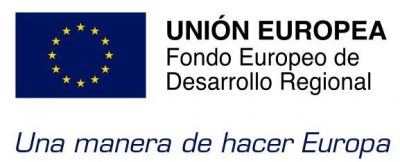|
The main objective of this project is the development of the sensor technology and the necessary tools, which allow elaborating man-machine collaborative work environments, based on an artificial vision system, laser triangulation system and/or photoelectric barrier, to integrate it in manual processes. Furthermore, developed systems will allow obtaining information that allows the adequate automation and robotization of various operations in the manufacturing of shoes and superficial finition process for manufacturing of toys which are actually not viable or difficult automation. Actually, we pretend to implement a pilot plant associated to the shoes sector to realize shoes soles deburring tasks for rubber boots, and other pilot plant associated to the toys sector for plastic pieces deburring. In both plants, there will be integrated adequate systems to guarantee that implementations respect safety standards on man-machine collaborative work environments specified in the norms EN ISO 10218-1:2011 and EN ISO 10218-2:2012. The incorporation of advanced machine-tools and robots in the industry in general and particularly in shoes industry and toys sector, based on the necessity of the fabrication of high-quality products in an increasingly short period between the design and the launch, maintaining sustainable cost. That involves the necessity to reduce as much as possible the adaptation periods or adjust the different machines that participate in the fabrication. Currently, robot systems are generally used by high-production industries; and for usually stiff objects with specific and perfectly know physical properties. However,the shoes and toys sector uses very diversified manual operations, and generally manipulates flexibles pieces of small size; consequently, the automation of those processes involve the necessity to determine, thanks to advanced sensors, differences produced during manual process, as the only way to synchronize the real and the theoric processes. In fact, the robotization in shoes is only present in security shoes, in which manual processes are more reduced, total operations which are applied for shoes are minor, the modelling is very simple and the productions are more important that in any other types of shoes. Concerning the toys sector, the robotization is more integrated by processes, which do not necessitate high precision to achieve tasks. But some of the processes aren’t automated today because of dimensional changes that happen in pieces’ manufacture with plastic extrusion or rotomoulding, which are very common processes in toys manufacture. Development of a man-machine collaborative work environment; we will analyse various sensors systems with lasers and vision cameras to detect common working areas between robots and operators, coordinating the commons working areas to reduce the time by more than 30%. Development of a system of vision able to obtain the position of the different pieces on which the operation that is realised with robot will be applied, to adapt the theoric trajectory obtained in the software with the real piece, thus solving differences produced in manual operations. For this, we will develop a compact system of vision which will be joined to the robot, obtaining the reference position of the scanner of the own robot position information. Development of a prototype of robotic cell for the shoes and toys operations. In both cases, it will eliminate overflows pieces to deal. APPLICATION SECTORS:
TECHNOLOGICAL SECTORS:
IVACE PROGRAM:
TECHNOLOGIC INSTITUTE PARTICIPANT (for project in collaboration):
COORDINATOR CONTACT:
|
Financed

